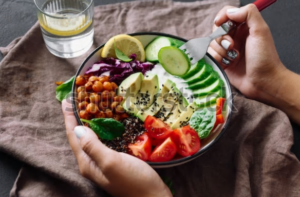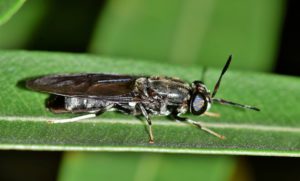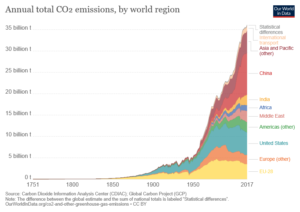Concerns of the chemist that I am
This title is a tribute to the famous French biologist and humanist, Jean Rostand. In 1967 he published Inquiétudes d’un biologiste (Concerns of a biologist). It is sometimes well for a blatant error to draw attention to overmodest truths!
As long as 55 years ago, significant residues of DDT were found in Adélie penguins and crab-eater seals of the Antarctic [Sladen et al. 1966]. This very clearly demonstrates that DDT, as well as many other pesticides, must be highly resistant. Their residues are found several thousand kilometres away from the application areas. Many chemical contaminants are long distance travellers!
Although obviously not new, the observation highlights that assessing the exposure routes of environmental chemical contaminants that threaten health is a priority challenge for the 21st century. Because they are so widespread, we are all exposed to a huge mix of products, many of which actually worsen the effect of others. They interact and disrupt our metabolisms, even if the individual molecules have no effect. In addition, they can interact through different mechanisms. This we refer to as “cocktail effects” [Svingen & Vinggaard 2016].
There is no escaping the very pertinent question that haunts so many people. Do these chemicals threaten our health? An original study by the French Agency for Food, Environmental and Occupational Health & Safety identified the main diets and the corresponding cocktails of some twenty contaminants [Traoré et al. 2016 & 2018]. The classes of contaminants are heavy metals, mycotoxins, polycyclic aromatic hydrocarbons, pesticides and others. In a follow-up study, researchers assessed the effects of individual molecules and the effects of characteristic mixtures. Obviously, the cocktail effect exceeds the sum of the individual effects. The conclusion is not surprising: the contaminants exhibit synergistic effects [Kopp. et al. 2018].
Are these contaminants pathogens? Is the body able to repel their attacks? Is the body failing to remove the contaminants? Many experts alert us to the relationship between the omnipresence of chemicals and the marked increase in so-called societal diseases such as obesity, diabetes, infertility, behavioural and cognitive disorders, and food allergies. The increased risk of morbidity derives from contaminants in our food and consumer products. Pesticides, several brominated and fluorinated organic compounds or plasticisers and bisphenols are the most dangerous. It is true that it was first thought that to cause damage these products had to persist in the body. We see however that even if the body rapidly excretes them, they have lasting effects. The effect of an exposure can reverberate many years later and even be passed on to the next generation(s). This is known as the “hit-and-run” impact [Trasande 2019].
Our future looks bleak! Many of these chemicals are harmful and are even nastier in association with other contaminants in the mixture or in the cocktail.
Human activity has introduced thousands of tons of chemicals into the environment even though we know only too well that humans absorb contaminants and store them into their blood. How can we remedy this global catastrophe, what can we do to defuse the time bomb that has been inserted into our bodies without our consent? There is no simple answer. To remove persistent pollutants, micro and nano plastics, and several other cocktails will be anything but easy. Cleansing will take a very long time!
It would therefore be a wise move to make sure our food is safe. It is the governments that must bear the final responsibility for the quality control of products on the market, for the necessary chemical and microbiological tests, and for risk assessment. All of this requires appropriate techniques. Limiting ourselves to determining concentrations in order to compare them with toxicological reference values is of little use. This approach is based on the evaluation of substances taken individually and does not provide any information about the reaction they cause in the presence of a complex cocktail. Nevertheless, emerging techniques, such as bio-analytical methods, multi-residue analyses and in silico techniques, offer promising prospects. Combining them with molecule-by-molecule analyses will allow us to identify the harmful effects of the cocktail as well as the most dangerous contaminants. For a secure future, it will be necessary to tackle the cocktail of contaminants with a cocktail of techniques [Goeyens 2020]. It is generally accepted that governments and industry should apply a class-based approach to chemicals rather than the molecule-by-molecule approach in order to develop safer alternatives and methods and eliminate many environmental contaminants [Blum 2016; Kwiatkowski et al. 2020].
Needless to say, the consumer also has a role to play. Let us steer clear of ultra-processed foods − they are often too sweet, too salty, too fatty − and increase our consumption of whole grains, fruits and vegetables, nuts and legumes. This can only improve our quality of life and help us survive diseases and pandemics like COVID-19. The virus that infects a person who is already suffering from pre-existing co-morbidities caused by the consumption of poor-quality food causes very serious problems [Pussemier & Goeyens 2020]. The presence of certain co-morbidities may indeed represent a potential risk factor, which can lead to serious clinical results.
The food we eat are often suppliers of invisible contaminants. Ensuring food security is essential for overcoming this crisis. Looking the other way would be a grave mistake! Toxins affect the body, but much worse than that, they affect the brain [Gaylord et al. 2020]. Could we really be heading towards an overall decline in human intelligence?
Mankind has opened Pandora’s jar and released all the (chemical) plagues contained therein. Only one thing was left behind as Hope − slower to react − remained locked up. So all hope is not lost since chemistry is both a curse AND a blessing.
This article is part of a more comprehensive publication in French [Goeyens 2021].
References
Blum [2016]. Tackling toxics, Science 351, 6278, 1117
Gaylord et al. [2020]. Trends in neurodevelopmental disability burden due to early life chemical exposure in the USA from 2001 to 2016: A population-based disease burden and cost analysis, Molecular and Cellular Endocrinology 502, 110666
Goeyens [2020]. Keeping Cocktail Effects Under Control is the Number One Challenge for the 21st Century, EC Nutrition 15, 2, pp. 3
Goeyens [2021]. À défaut de donner un sens à l’Anthropocène, sachons en tirer des leçons, in Susanne & Vanaise (eds.) L’aventure humaine, MeMograMes, les éditions de la MéMoire, 301 – 320
Kopp. et al. [2018]. Genotoxicity and mutagenicity assessment of food contaminant mixtures present in the French diet, Environmental and Molecular Mutagenesis 59, 8, 742 – 754
Kwiatkowski et al. [2020]. Scientific Basis for Managing PFAS as a Chemical Class, Environmental Science & Technology Letters, https://dx.doi.org/10.1021/acs.estlett.0c00255, pp. 12
Pussemier & Goeyens [2020]. Gezonde eetwaren voor een hoogwaardige voeding, CIACO Imprimerie, pp. 236
Sladen et al. [1966]. DDT residues in Adelie penguins and a crabeater seal from Antarctica, Nature 210, 5037, 670 – 673
Svingen & Vinggaard [2016]. The risk of chemical cocktail effects and how to deal with the issue, Journal of Epidemiology and Community Health 70, 4, 322 – 323
Traoré et al. [2016]. To which chemical mixtures is the French population exposed? Mixture identification from the second French Total Diet Study, Food and Chemical Toxicology 98, 179 – 188
Traoré et al. [2018]. To which mixtures are French pregnant women mainly exposed? A combination of the second French total diet study with the EDEN and ELFE cohort studies, Food and Chemical Toxicology 111, 310 – 328
Trasande [2019]. Sicker, Fatter, Poorer: The Urgent Threat of Hormone-Disrupting Chemicals to Our Health and Future – and What We Can Do About It, Houghton Mifflin Harcourt, pp. 221
















